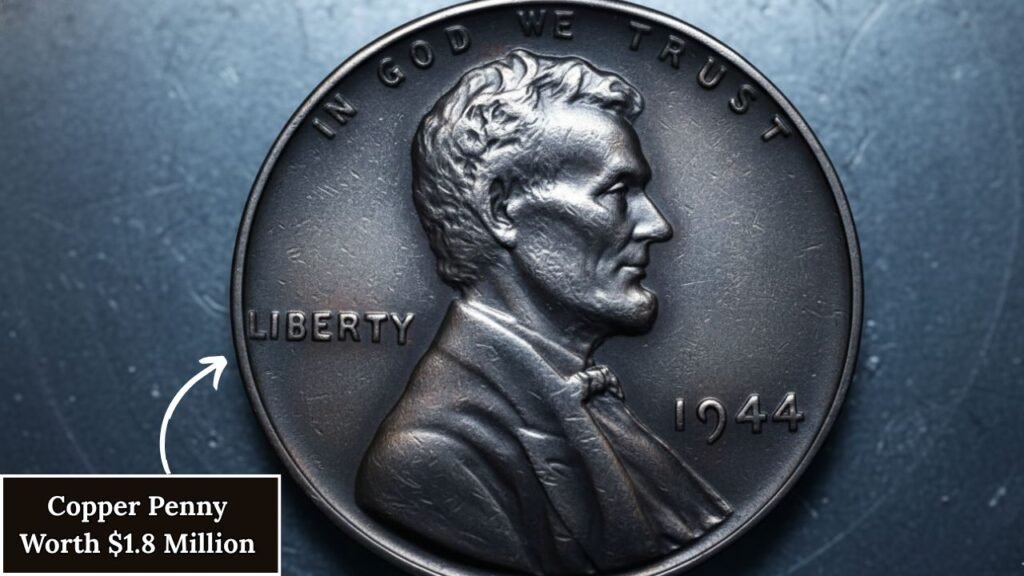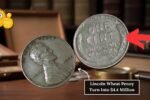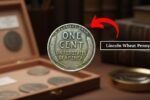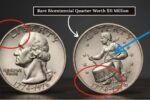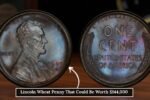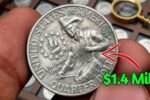It may sound unbelievable, but a single penny can be worth more than a luxury home. One exceptionally rare 1943 Lincoln Wheat Penny, struck in copper instead of the usual steel, recently sold for over $1.8 million at auction. Experts say a few more could still be hiding in circulation. Here’s what makes this coin so extraordinary and how you can spot one.
The History of the 1943 Wheat Penny
During World War II, copper was vital for ammunition and military equipment. To preserve it, the U.S. Mint produced pennies from zinc-coated steel rather than copper. A small number of copper planchets from 1942 were mistakenly left in the minting presses, resulting in a handful of 1943 pennies being struck in copper.
These errors are now among the most coveted coins in U.S. history.
Why the 1943 Copper Penny Is Worth Millions
The value of a 1943 copper penny comes from its rarity. Fewer than 20 authentic examples are believed to exist from all U.S. mints (Philadelphia, Denver, and San Francisco). In pristine condition, one penny fetched $1.8 million at auction, making it one of the most expensive pennies ever sold.
Factors That Affect Value:
- Mint mark (Philadelphia, Denver, San Francisco)
- Condition (uncirculated vs. circulated)
- Authentication by professional grading services
Even circulated pennies can sell for hundreds of thousands of dollars.
How to Identify a Genuine 1943 Copper Penny
Here’s a quick guide to spotting this rare coin:
| Test | Copper Penny | Steel Penny |
|---|---|---|
| Year | 1943 | 1943 |
| Magnet | Non-magnetic | Magnetic |
| Color | Reddish-brown or orange | Gray-silver |
| Weight | 3.11 grams | 2.7 grams |
| Mint Mark | D (Denver), S (San Francisco), or none (Philadelphia) | Same options, less valuable |
| Authentication | Must be verified by PCGS or NGC | Optional |
Tips:
- Look for “1943” under Lincoln’s portrait.
- Perform a magnet test—copper pennies won’t stick.
- Check color and weight carefully.
- Always get professional authentication due to counterfeit coins.
Other Rare Lincoln Wheat Pennies
Collectors also keep an eye on other valuable minting errors:
| Coin | Year | Key Feature |
|---|---|---|
| 1909-S VDB | 1909 | First year of series, designer initials visible |
| 1914-D | 1914 | Low-mintage Denver penny |
| 1922 No D | 1922 | Missing Denver mint mark |
| 1955 Double Die | 1955 | Doubling on date and lettering |
A Fortune Waiting in Your Pocket
With billions of Lincoln Wheat Pennies produced, many still turn up in drawers, jars, or loose change. While most are common, a genuine 1943 copper penny could still be hiding somewhere. Before tossing your spare change, grab a magnet and examine your pennies carefully—you could be holding a $1.8 million coin.
FAQs
How many 1943 copper pennies exist?
Fewer than 20 confirmed examples are known across all U.S. mints.
Can a circulated 1943 copper penny be worth money?
Yes, even circulated examples can fetch hundreds of thousands of dollars.
How do I test if my penny is copper?
Use a magnet test (copper is non-magnetic), check its weight, and observe its color.
Where can I get my penny authenticated?
Professional grading services like PCGS or NGC verify authenticity.
Are counterfeit 1943 copper pennies common?
Yes, counterfeits exist, so authentication is essential before selling or buying.
